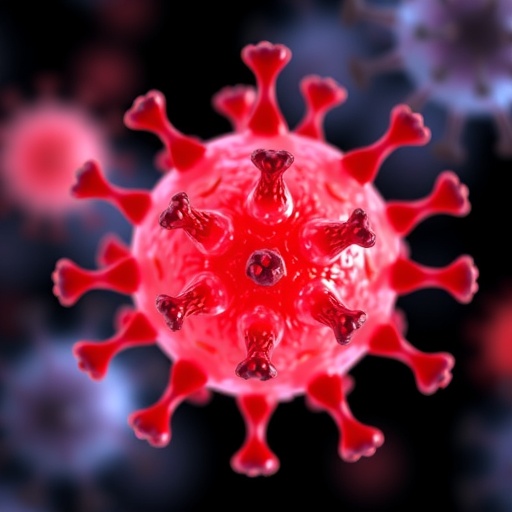PHILADELPHIA — (Nov. 13, 2017) — Researchers from The Wistar Institute discovered a novel form of crosstalk among tumor cells and other cell types in the tumor microenvironment, elucidating the mechanism of action of an immunotherapeutic strategy that inhibits tumor-associated macrophages (TAMs) and instructing a more effective use of this therapeutic approach. This work was published online in Cancer Cell.
TAMs make up a prominent immune cell population present in the tumor microenvironment. Because of their ability to promote tumor cell proliferation and invasion and inhibit antitumor immune response mediated by T cells, TAMs are considered a potential therapeutic target. Inhibition of the CSF-1 receptor (CSF-1R), which mediates the functions and survival of TAMs, has received interest as a potential strategy to eliminate these cells. However, despite being effective at depleting the TAMs in various tumor models, this strategy has failed to achieve the expected antitumor effects.
"Our findings revealed new aspects of the intricate cellular network that involves tumor cells, TAMs and cancer associated fibroblasts that talk to each other via production of chemical messengers," said Dmitry I. Gabrilovich, M.D., Ph.D., Christopher M. Davis Professor and program leader of the Immunology, Microenvironment and Metastasis Program at Wistar. "We discovered an additional effect of CSF-1R inhibition that brings into play other immunosuppressive cells that sustain tumor progression."
Gabrilovich and colleagues found that, besides depleting TAMs from the tumor site, CSF-1R inhibition also resulted in the unexpected recruitment of polymorphonuclear myeloid-derived suppressor cells (PMN-MDSCs), which favor tumor progression and mediate resistance to immunotherapy approaches. The presence of these cells may explain the lack of antitumor effect by CSF1R inhibition.
The researchers investigated the mechanism of PMN-MDSC recruitment to the tumor site and uncovered an intricate crosstalk that resulted in increased production of signaling proteins responsible for attracting PMN-MDSCs in response to CSF-1R inhibition. In particular, they observed higher levels of Cxcl-1, in this context produced by cancer-associated fibroblasts.
"In order to achieve a therapeutic effect, we realized that we needed to reduce the presence of both immunosuppressive populations, TAM and PMN-MDSC," added Gabrilovich.
By combining the CSF-1R inhibitor with a selective inhibitor of CXCR2, which is the receptor for Cxcl-1 and other molecules whose levels are increased as a consequence of CSF-1R inhibition, they observed significant reduction in tumor growth. In addition, the combination of the two inhibitors together with an immune checkpoint inhibitor resulted in a dramatic antitumor effect, providing additional therapeutic benefits.
###
This work was supported by National Institutes of Health grants P01 CA 140043, P50 CA168536, and P01 CA114046. Core support for The Wistar Institute was provided by the Cancer Center Support Grant P30 CA010815.
Vinit Kumar from the Wistar Institute is the first author of this study. Laxminarasimha Donthireddy, Douglas Marvel, and Thomas Condamine from The Wistar Institute made major contribution to this study. Other contributors from The Wistar Institute include: Fang Wang, Sergio Lavilla-Alonso, Ayumi Hashimoto, Prashanthi Vonteddu, Reeti Behera, David W. Speicher, Ashani T. Weeraratna, and Qin Liu. Other co-authors include: Marlee Goins, Charles Mulligan, Brian Nam, Neil Hockstein, Fred Denstman, and Shanti Shakamuri from Helen F. Graham Cancer Center at Christiana Care Health System, Wilmington, Del.; Timothy Chao, Robert H. Vonderheide, Xiaowei Xu, Albert Lo, and Ellen Pure? from University of Pennsylvania; Lucia R. Languino from Thomas Jefferson University; Peter Ordentlich from Syndax Pharmaceuticals, Inc., Waltham, Mass.; Chunsheng Zhang and Andrey Loboda from Merck & Co., Inc., Boston, Mass.; Manuel A. Sepulveda and Linda A. Snyder from Janssen R&D, Spring House, Pa.
The Wistar Institute is an international leader in biomedical research with special expertise in cancer research and vaccine development. Founded in 1892 as the first independent nonprofit biomedical research institute in the United States, Wistar has held the prestigious Cancer Center designation from the National Cancer Institute since 1972. The Institute works actively to ensure that research advances move from the laboratory to the clinic as quickly as possible. wistar.org.
Media Contact
Darien Sutton
[email protected]
215-898-3988
@TheWistar




